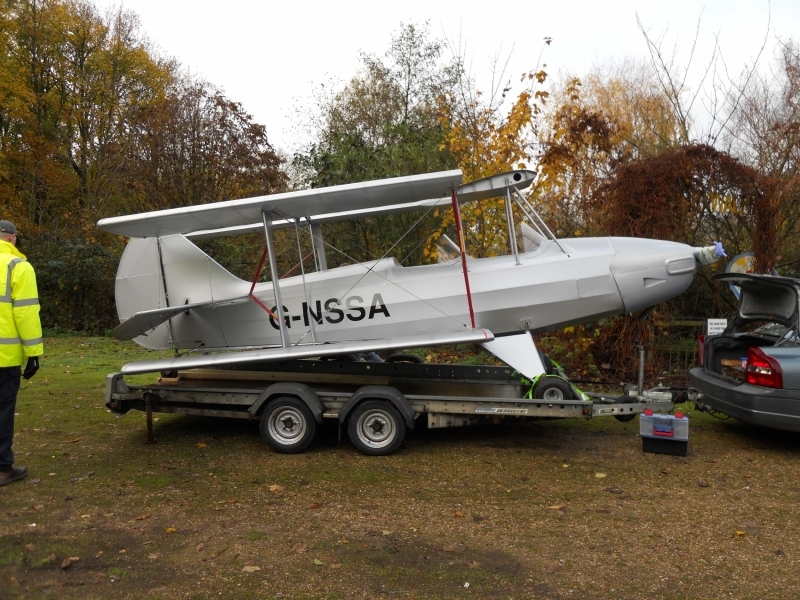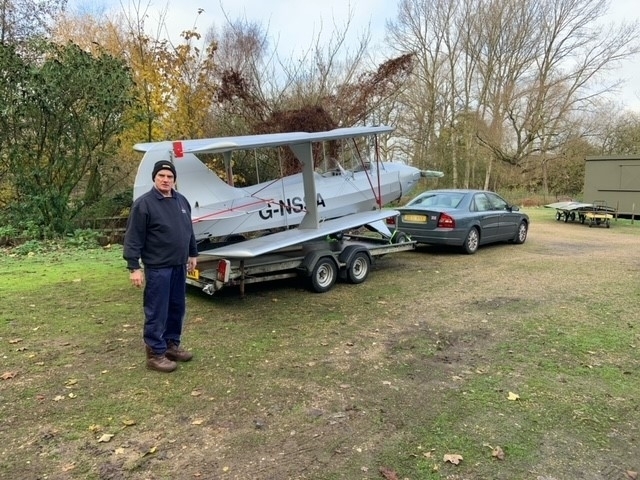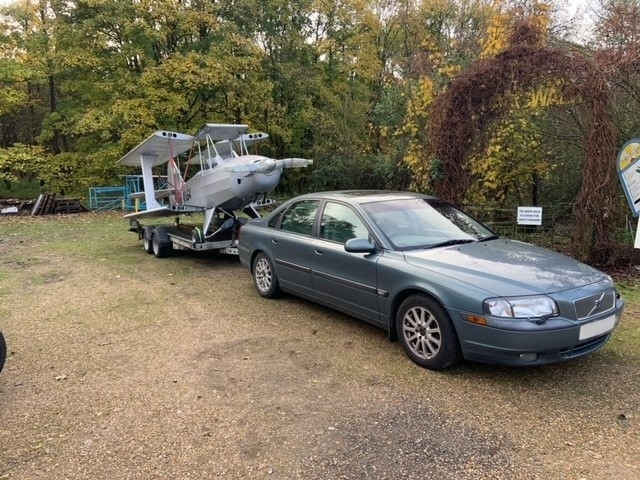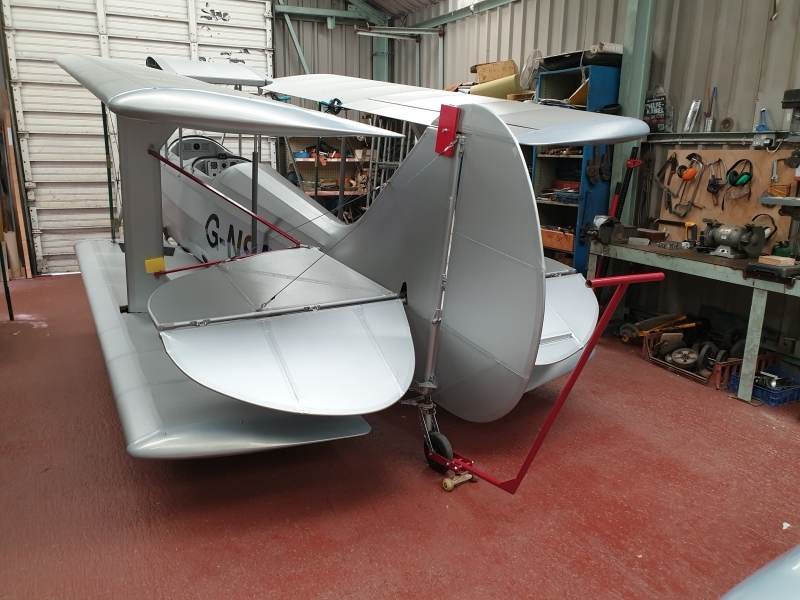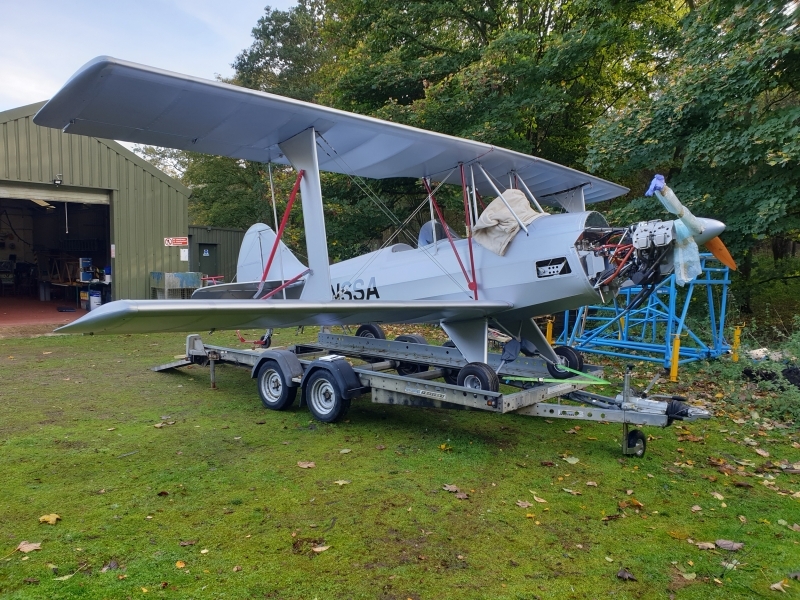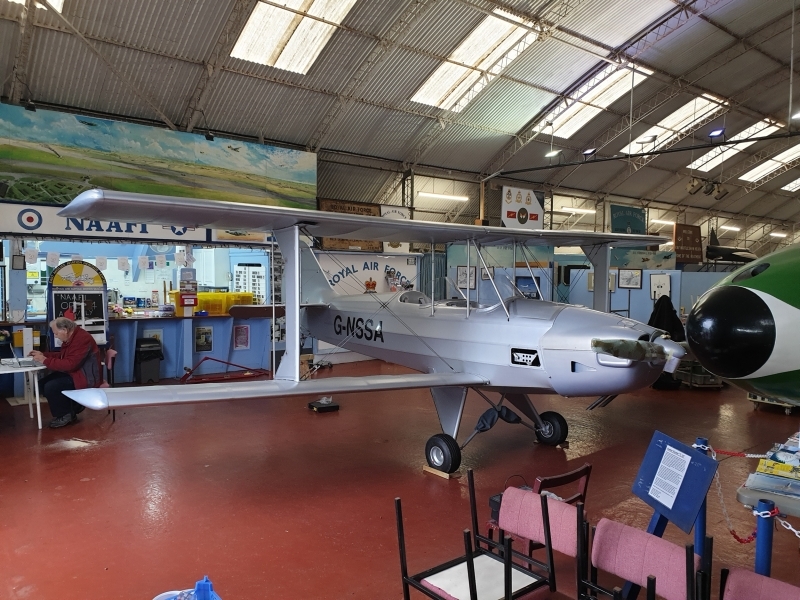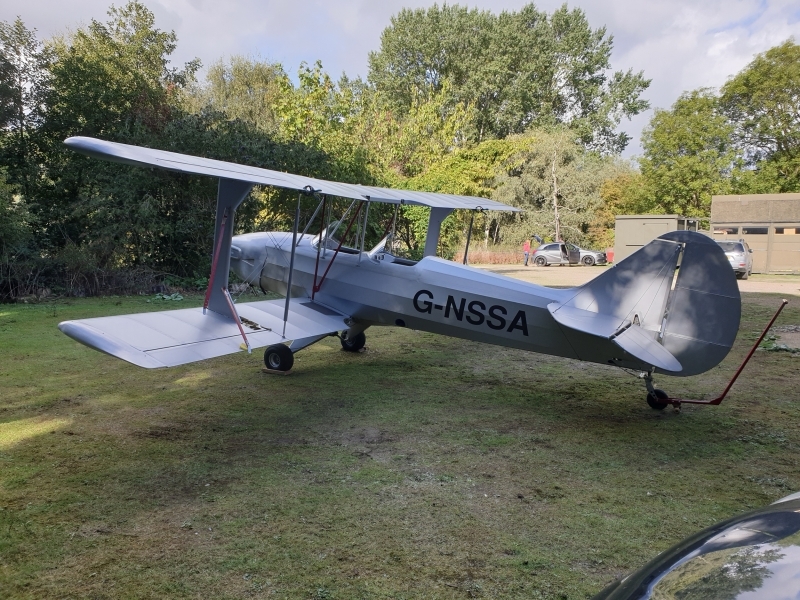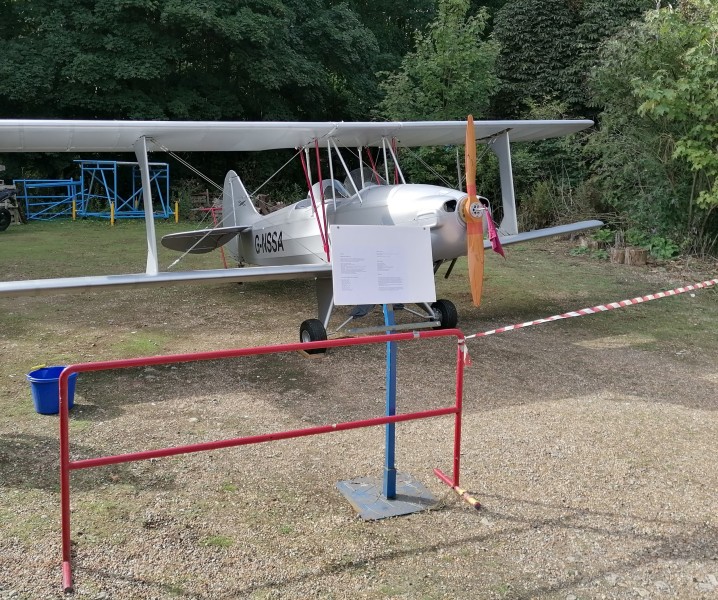Sherwood Ranger Departs
Special Edition
In this “Special Edition” Blog, we have a report on the final stages of the building of the Sherwood Ranger XP by a member of the Museum. Included are the report by Andy on those final stages, the information sheet that accompanied the aircraft when it was out on display, photos taken by members (including those previously published) and a note from the Chairman, Steve, on how the project has enriched both the visitor experience and benefited the museum.
This has been an unusual project, and we look forward to further reports and a successful conclusion when Andy fulfils the testing requirements in the next phase and ultimately the aircraft gets airborne.
Pete S
![]()
Building the Sherwood Ranger
Report on the building of Sherwood Ranger G-NSSA by NASAM member Andrew Stanley.
In 2014 the North Suffolk Skills Academy, based in Halesworth purchased the Ranger Kit from the Light Aircraft Company located at Little Snoring Airfield in Norfolk.
The purpose of building the kit was to create an “apprenticeship like” course where students studying BTEC level 2 Engineering and level 3 Aeronautical engineering could be taught the theory, workshop skills and practices needed in an aircraft manufacturing environment.
The course was unprecedented throughout the country at the time in offering this opportunity to students. Students learned benchwork and machine shop skills and had to achieve an acceptable aircraft standard of workmanship before working on aircraft parts. The students who undertook this course were mentored by RAF and BAeS staff from RAF Marham and of course, one of NASAM’s finest, John Self.
The students achieved great results in their academic studies, some joining the RAF, BAeS, Mclaren and Mercedes F1 teams as apprentices. Others have moved into work as diverse as Offshore renewable energy, fabrication and the water supply industry.
Sadly, the Academy was shut down in 2016, losing not only the Aeronautical Engineering course but also motor vehicle maintenance, catering, building skills, carpentry, decorating and hairdressing/ health and beauty. Quite a loss to the students of the Waveney Valley!
I purchased the kit and continued with the building of the a/c at home. The designer of the kit, Russ Light, enabled the majority of the building of the main assemblies, wings, fuselage, empennage etc. to be built in a garage at home. Not easy but it was do-able. Smaller parts were completed and fabric covered using the Oratex system on the kitchen table, the glue used is water based and once secured using a digital heat gun, is shrunk using a digital iron. No fumes to get high on!
Eventually, when rigging needed to take place the aircraft and components were moved to an airfield near Wickham Market. The urgent need arose to move the aircraft once rigging was complete and John Self and Steve Bell kindly allowed me to move into the Museum workshop at very short notice, in the middle of June saying there was a five week window before another donation to the museum would arrive.
As those of you who frequented the workshop will know, five weeks (and no large aircraft donation) allowed the Ranger to stay and be completed at the end of November. So five weeks stretched to five months proving the rule that when 90% is done- there’s 90% to do! The highlight of the completion of the work was undertaking the weight and balance checks in the NAAFI. Gary Stebbing didn’t blink an eye when the request to use the only space in the whole museum big enough where the wings could be spread was made.
Having purchased a car transporter trailer which was then modified to carry the tail wheel Ranger, the aircraft was transported to the new hangar at Beccles airfield with the help of Roger Blake.
I decided to take the month of December off from thinking about the a/c. In total, from initial planning to now, the project has lasted eight years. On the Sunday morning in June when the a/c arrived outside the workshop at the back of the museum John said ”that a/c looks really pretty!” He glanced at me as I scowled at the a/c and then said “but you have your dark filters on”, I did.
Over the five months the dark filters have disappeared and I can see the a/c for what it is. I had begun to regain my confidence and enjoyment in using skills which as the makers amongst us know take a life time to learn.
Well, what next. Flight and engine testing, checking, inspecting, checking, ins.. you know the score. Oh, and paperwork. Then, who knows.
I hope I’m right in claiming this is the first new a/c to leave the gates of the museum to then fulfill its destiny. To fly!
I have to thank from the bottom of my heart John, Steve, Gary, Roger and all the members and visitors who helped, took an interest and encouraged me during the time the a/c has been at the museum. Without all of your generosity, who knows where the Ranger (or I) would be?
Thank you.
Andy
(Photos) Ranger Departs – From Members
(Photos) Ranger Departs – From Andy
![]()
Ranger on Display
Click to Expand
Ranger Information Sheet
G-NSSA
Sherwood Ranger XP
The prime difference between the Sherwood Ranger ST (Microlight) and the Sherwood Ranger XP (Cat A) is one of wing span and wing loading. The ST has a wing span of 7.92 m and the XP 7 m, they both have the same MTOW the XP therefore has increased wing loading and a higher stall speed.
Tandem two-seat tailwheel biplane
Wings – constant-chord unstaggered and swept
Tail – conventional
Flight controls – Pitch control by elevator on tail; yaw control by fin-mounted rudder; roll control by four Frise-type ailerons.
Wing bracing – wings braced by I-shaped interplane struts and steel flying and landing wires
Landing gear – Undercarriage has three wheels in tailwheel formation bungee suspension on main wheels, bungee suspension on steerable tailwheel
Ground handing via steerable tailwheel, rudder and differential cable-operated brakes.
Construction aluminium tube, wood and fabric
Fuselage mounted engine driving tractor propeller.
External dimensions and areas
Length overall 6.1m, 20ft
Height overall 2.24m, 7.3ft
Wing span 7.0m, 22.75ft
Constant chord 1.0m, 3.3ft.
Dihedral 3° (lower wing only).
Sweepback 3.8°.
Total wing area 14m², 140ft².
Aspect ratio 7.92/1.
Wheel track 1.34m, 4.40ft.
Wheelbase 3.65m, 12ft.
Main wheels dia. Overall 33cm, 13in.
Tailwheel dia. Overall 20cm, 8in.
Power plant
Jabiru 2200 85hp, 4 cylinder overhead valve, air-cooled, carburettor and self sustaining ignition
Fuel capacity 43lt, 9.5 Imp gal., 11.3 US gal.
Performance
Max. level speed 80mph.
Never exceed speed 100mph.
Economic cruise speed 70mph.
Stall speed 40mph.
Max. climb rate at sea level 800ft/min. (engine dependant)
Landing distance to clear 15m obstacle on grass N/A.
Service ceiling N/A.
Range at average cruising speed 200 miles.
Noise level N/A. (engine dependant)
History
The aircraft was bought in 2014 by the North Suffolk Skills Academy, Halesworth, from the Light Aircraft Company based at Little Snoring Airfield in Norfolk.
It is a British designed and made aircraft supplied in kit form so that students studying BTEC Level 2 Engineering and BTEC Level 3 Aircraft Engineering at NSSA could learn and apply knowledge and skills in a real world environment. This extra curricular activity proved popular and students enjoyed the project making good use of the experience. Mentors from the RAF and BAeS and the Norfolk and Suffolk Air Musem assisted the students.
Students have gone on to work for the RAF, BAeS, Maclaren and Mercedes Formula 1 and Suffolk Water to name but a few.
When the Academy was closed in 2016 the kit was purchased by Andrew Stanley and he has continued the build since.It is soon to be completed and the aircraft will undertake a testing regime to ensure that aircraft complies with the exacting standards of the Light Aircraft Association who oversee the operation of this type of aircraft.
![]()
From the Museum Perspective
Throughout the time that the Ranger stayed at Flixton, it has been a source of interest to visitors. Rather than being “clutter” in the workshop, it was a positive, if temporary, addition to the museum. Andy’s willingness to talk to visitors about the aircraft has been an increased benefit too, although it might explain part of the reason that it was five months, not weeks, that it stayed with us…
The museum has gained in another direction too. As a result of the stay Andy has become a volunteer with the museum, so I think that we win all round.
We wish Andy well and hope that he enjoys flying his new mount. I’m sure that, as with builders everywhere, he will soon be starting another project…
Steve

Would You Like To Help
There are a number of ways you can help the museum if you wish to do so. Especially for a volunteer-run charity organisation such as the Norfolk and Suffolk Aviation Museum. You could become a Museum Member by paying a small fee each year, or you could make a one-off donation to help with our running costs.
To become a Museum Member or a Volunteer Member please click on the appropriate button below to see the details on our main website.
To make a donation please click the donate button below to be taken to our donations page.
For all other details on the museum please go to our main web page by clicking on the picture below.


